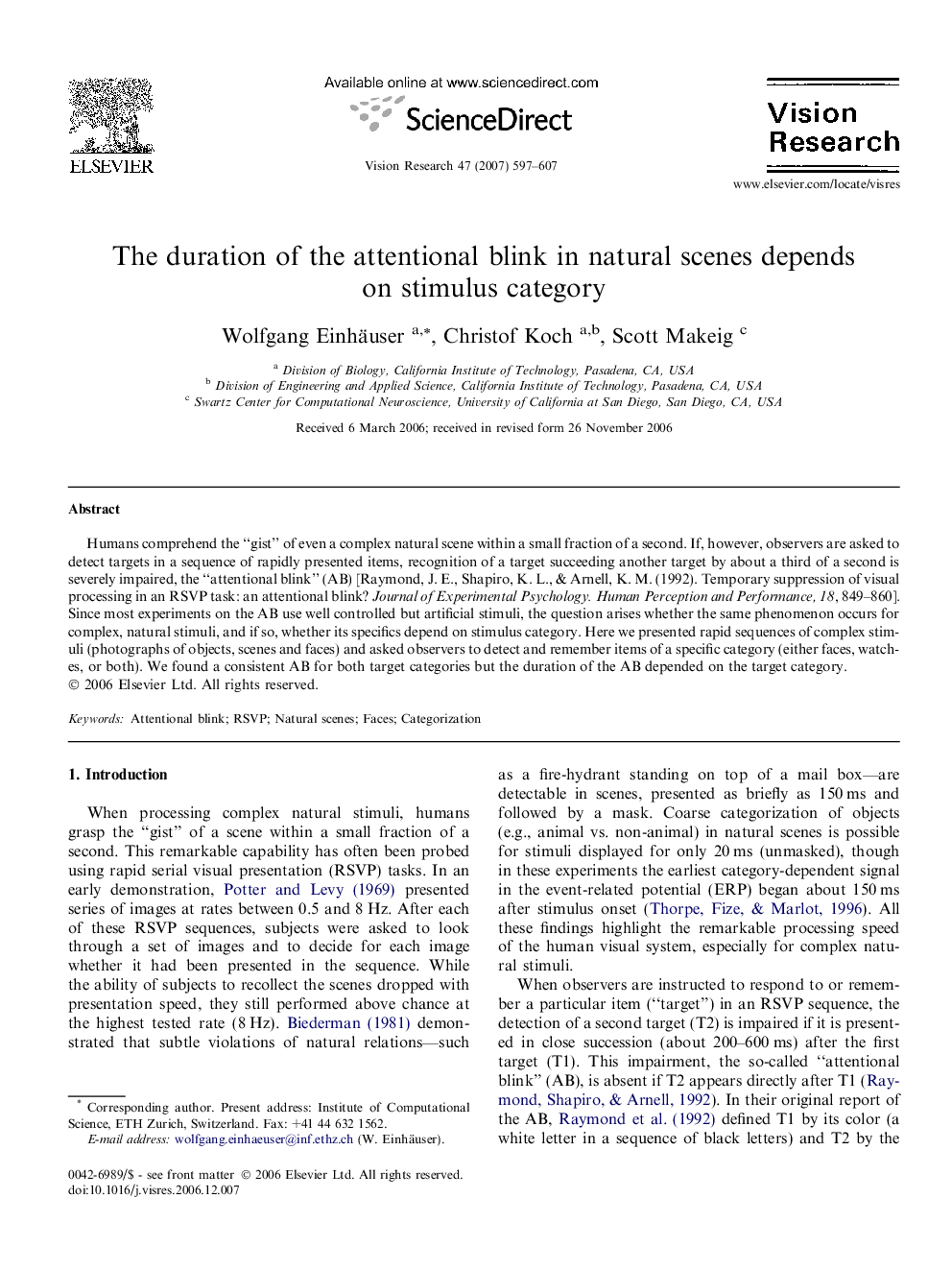| Article ID | Journal | Published Year | Pages | File Type |
|---|---|---|---|---|
| 4036428 | Vision Research | 2007 | 11 Pages |
Humans comprehend the “gist” of even a complex natural scene within a small fraction of a second. If, however, observers are asked to detect targets in a sequence of rapidly presented items, recognition of a target succeeding another target by about a third of a second is severely impaired, the “attentional blink” (AB) [Raymond, J. E., Shapiro, K. L., & Arnell, K. M. (1992). Temporary suppression of visual processing in an RSVP task: an attentional blink? Journal of Experimental Psychology. Human Perception and Performance, 18, 849–860]. Since most experiments on the AB use well controlled but artificial stimuli, the question arises whether the same phenomenon occurs for complex, natural stimuli, and if so, whether its specifics depend on stimulus category. Here we presented rapid sequences of complex stimuli (photographs of objects, scenes and faces) and asked observers to detect and remember items of a specific category (either faces, watches, or both). We found a consistent AB for both target categories but the duration of the AB depended on the target category.
